![]()
The Paraclete: "They are authorized to give spontaneous awakening"
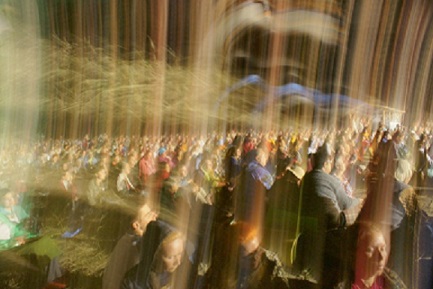
Cool Breeze (Ruach) of the Holy Spirit manifesting in Russia August 1, 2008
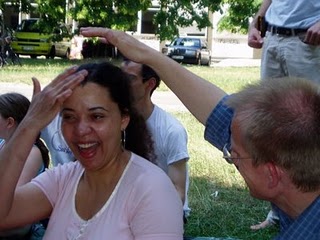
Feeling fountain of Breeze/Pneuma/Riah Al-Qiyamah/Prana/Vibrations/
Qi of the Spirit (Mother, Ruach, Tao, Kukulkan, Paraclete, al-Ruh) flowing out of the fontanelle for very first time. Verily, verily, it is the Fountain of Immortality! (Fontanelle comes from fontaine, French for "fountain.”)

The Paraclete Shri Mataji “Actually, Kundalini is your beloved Mother and you are Her dearest, only child. She loves you more than anything else in the universe and is interested only in giving you the supreme Joy through your second birth. She is born again and again with you and resides in your Mooladhara, the triangular bone of your sacrum (the coccyx). She records your problems and waits till the subject meets a realized soul as guru or a Sahaja Yogi. They are authorized to give spontaneous awakening.”*
The Paraclete Shri Mataji
"This living process is very clearly described in Indian scriptures since ancient times. There are 108 Upanishadas in the Sanskrit language which have exposed the knowledge about Kundalini awakening and the spiritual ascent. Also it is indicated in other scriptures of other countries. In the Bible it is called the Tree of Life and it is quoted that, 'I will appear before you like tongues of flames'. When the Kundalini rises, She passes through various centres which look like tongues of flames when enlightened.
The Cool Breeze of the Holy Ghost of Pentecost is this power that you can feel in Sahaja Yoga (spontaneous salvation). In the Gospel of St. Thomas, very clearly describes the Sahaja experience as the ultimate of our religious life. Also it says we must look after our centres. This Kundalini has to ascend and pierce through six subtle centres which are placed in the spinal cord and in the brain. The last breakthrough is the actualisation of the baptism as one feels the Cool Breeze of the Holy Ghost emitting out of one's fontanel bone area.”
The Paraclete Shri Mataji
First English Book
*At this site it is your own Spirit-Paraclete or Divine Mother or Holy Spirit within (not Shri Mataji) who directly gives the spontaneous awakening (Self-realization/ Baptism/ Kundalini awakening/second birth). We have within ourselves the same eternal Spirit of God Almighty who now carries out His plan of redemption of His world. All conditions pertaining to authorization has been met, backed by irrefutable empirical evidence concerning both the Source (Adi Shakti/Holy Spirit-Paraclete) and Her incarnation (Shri Mataji/ Paraclete) based on hundreds of individual children's encounters with Her in the Sahasrara (Kingdom of God). Above all, the Divine Mother concludes and brings closure to the religious expectations and eschatology of all the major religions and their masses. No religion triumphs over another. They all triumph collectively, harmoniously!
Those who wish to help bring about this greatest of miracles may do so by providing links to this page since—except for providing the initial means to attain Self-realization—there is absolutely no hidden agenda, financial solicitation of any kind (donations, books, audio, video, ads, etc.), or any affiliation request (body, group, organization, membership) whatsoever. It is a most priceless gift to give. Verily, verily it is the gift of the Resurrection, of eternity, of immortality. The world must know that Jesus kept his promise!
The initial means of self-salvation only requires the free will to affirm that desire to the Divine within. After Self-realization one need not even visit this site again! It will, for all times, ever remain an internal journey:
"The goal of yoga (Self-realization) is not found in the heavens, nor on earth, nor in the underworld, but in the union of the individual soul with the supreme Self; thus do skilled adepts define yoga.”
Thereafter, if one takes even a single step in any direction to seek the Divine Mother/Spirit-Paraclete/Holy Spirit one is assuredly going the wrong way. Verily, verily, you will only find Her within yourself!
"The same idea of the seal of the Spirit as the arrabon of redemption exists in Ephesians 1:13-14. The phrase 'promised Holy Spirit' is an indication of the Spirit's unique eschatological role. The Spirit is the eschatological signifier of the people of God who will choose them among the other humans and protect them from the suffering and the tests of the present age. The Spirit is not only the first installment that guarantees the redemption of the age to come; as Andrew Lincoln suggests, the Spirit also determines the mode of existence in which this redemption (the resurrection of the body) will take place.” (Awad 2011, 261)
“We have The Mother (Holy Spirit) within ourselves, in our hearts, and if She is awakened, She is going to look after us. She is going to give all the protection that is needed. And there is nothing to be frightened of anything. Kundalini cures you. She improves you. She bestows all the blissful things upon you. She takes you away from the worries of the grosser level.”
The Paraclete Shri Mataji

The Holy Spirit: God's Power at Work
article by Scott Ashley
Most people don't understand the working of the Holy Spirit. As a result, they don't recognize its power to transform our lives.
At this time of year almost 2,000 years ago, a miraculous, momentous event occurred—the New Testament Church was founded on the Feast of Pentecost. What made this occurrence so astounding—and Acts 2 records that the circumstances of that day were truly dramatic—was the giving of God's Spirit to the followers of Jesus Christ as He had promised (John:14:16-17, 26; 15:26; 16:7-14; Acts:1:4-5, 8).
What is this Holy Spirit that came on Christ's followers that day? Why did these things happen? What should we learn from those strange occurrences?
To understand the events, we must first understand what the Holy Spirit is and what it is not. To grasp that, we must understand what the Holy Spirit does.
What, then, does the Bible teach about the Holy Spirit?
Concepts of 'spirit'
We must first consider the word spirit as it is used in the Bible. Just what is spirit, and what does that word mean?
Four words—two Hebrew and two Greek—are translated "spirit" in the Bible. Of these four, two are used only twice: the Hebrew word neshamah, which means "Breath," and the Greek word phantasma, which means "phantom" or "Apparition.” The other two words are the Hebrew ruach and the Greek pneuma, each used several hundred times . Understanding these words is crucial to understanding the Holy Spirit.
Ruach means "Breath, air; strength; wind; breeze; spirit; courage; temper; Spirit" ( Vine's Complete Expository Dictionary of Old and New Testament Words, Thomas Nelson Publishers, Nashville, 1985, p. 240). Of the 378 times it is used in the King James Version, it is translated "Spirit" or "spirit" 272 times, "Wind" 92 times, "Breath" 27 times and in other ways 27 times. Ruach is used similarly in most other Bible versions.
The concepts of "Wind," "Breath" and "spirit" were all related in biblical thought and language. We see these intertwined in the use of ruach in Ezekiel 37, which describes a great multitude of people being resurrected and restored to physical life to understand God's truth. In this fascinating account, what is even more extraordinary is the way ruach expresses the connection of these ideas...
Here we see ruach translated three ways in one chapter: Spirit (referring to God's Spirit), breath and wind.
'Spirit' in Greek
What is the meaning of pneuma? This word "primarily denotes 'the wind' (akin to pneo, 'to breathe, blow'); also 'breath'; then, especially 'the spirit,' which, like the wind, is invisible, immaterial and powerful" (ibid., p. 593). It is used 385 times in the King James Version and is usually translated "Spirit" or "spirit.”
Connected concepts
We see the same connection between spirit, breath and wind continued in the New Testament. Although the Greek (unlike the Hebrew) has a different word for wind ( anemos ), pneuma and its related verb pneo are translated "Breath" (2 Thessalonians:2:8; Revelation:11:11), "Wind" (John:3:8; Acts:27:40) and "Blow" (Luke:12:55).
Jesus Christ made this connection Himself. Without the understanding of this background, details of the incident in which Jesus appeared to His followers after His resurrection are puzzling. After Jesus showed them the wounds in His hands and side, verifying that He had indeed been raised from the dead, John records that Jesus said: " 'Peace to you! As the Father has sent Me, I also send you.' And when He had said this, He breathed on them, and said to them, 'Receive the Holy Spirit [ pneuma ] ' " (John:20:21-22).
Earlier He had told them He would send them a "helper" and a "comforter," the Holy Spirit. Here He repeats that promise. He also demonstrates the nature of the Spirit that He would send: It would be like a breath, like a wind, something they couldn't see, but they would be influenced by its power.”
http://www.ucg.org/christian-living/holy-spirit-gods-power-work/
Web (December 25, 2014)
Scott Ashley
Scott Ashley is managing editor of The Good News magazine, United Church of God booklets and its printed Bible Study Course. He and his wife, Connie, live in Arvada, Colorado, a suburb of Denver. After graduating first in his high school class, Mr. Ashley attended Ambassador College in Big Sandy, Texas, graduating in 1976 with a theology major and minors in journalism and speech. It was there that he first became interested in publishing, an industry in which he has worked for more than 35 years. During his career, he has worked for several publishing companies in various capacities. He has been employed by the United Church of God since 1995, overseeing the planning, writing, editing, reviewing and production of The Good News, 33 booklets and the 12-lesson Bible Study Course. His special interests are the Bible, archaeology, history and the Middle East.
"Holy Spirit is not really an intellectual premise but a faith experience"
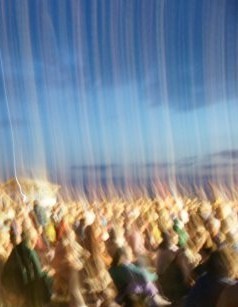
by those taking part in the Resurrection (Photo
taken 1st August 2008 in Russia of Ruach
which, though invisible to the naked eye,
can be felt as Cool Breeze flowing from the
hands, head and other parts of the body.
(Click image for uncropped original)
From: "jagbir singh"
Date: Sun Jan 15, 2006 1:50 pm
Subject: "The Holy Spirit is not really an intellectual premise but a faith experience"
i would like to add that the Shakti/Holy Spirit/Ruh/Aykaa Mayee is
not really an intellectual premise but a faith experience of the
Divine Message. Immediately after the Divine Feminine gives Self-
realization/Birth of Spirit/Baptism of Allah/Opens Dasam Dwar the
seeker will feel the Cool Breeze, the Ruach or Breath of God, flowing
from his/her hands and head. The Holy Spirit is indeed a daily
experience of His Breath for the rest of your life. The Divine
Message is a spiritual sanctuary, a beacon of hope, joy, peace of
eternal life to all humans.
“So we must know that it's a new explosion. That's why I call it
Blossom Time, that we are definitely spiritual people. We have got
spirituality and that the Divine is working. So the Kali Yuga is
finishing. Now it is the Krita Yuga ...
Krita Yuga means at the Time when this All-Pervading Power has
started acting. Nobody felt the Cool Vibrations. Can you believe
that? It was never related to any science. It was never related to
physical science especially. So I must say the achievement of
Sahaja Yoga is tremendous ... The All-Pervading Power has started
acting as I am on Earth!" Shri Mataji Nirmala Devi
Just a handful of humanity is stirring to the faintest of Light
discernible at the earliest breaking of the Divine Dawn. They are the
SYs who daily experience His breath flowing through their hands and
head, and meditate on His Spirit within. They truly understand that
the Shakti/Holy Spirit/Ruh/Aykaa Mayee is not really an intellectual
premise but a faith experience of the Resurrection and Last Judgment.
All religious organizations have merely been intended as temporary
vehicles and starting points for the Divine Message, the collective
culmination of God's Plan for humanity.
jagbir
The breath of life and the Spirit of God
Robert Pyne (Robert_Pyne@dts.edu)
Tue, 6 Jun 95 09:55:19 CDT
I'm fairly new to the reflector so let me give a quick intro. My name is Bob Pyne and I teach theology at Dallas Seminary. I met a few of you in Chicago at the ISAE conference and have several friends who have suggested that I listen in on these conversations.
I wouldn't think to jump in on all of the discussion about Vitamin C, pseudo-genes, etc., but I just returned from a short vacation and see something here that I might be able to contribute to.
Bill Hamilton has been talking about the breath of God in Genesis and the uniqueness of humanity. Since I've done some work on the vocabulary there, let me make a few suggestions.
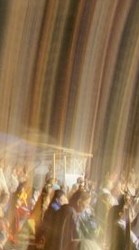
Spirit's power, to bring
humanity to salvation (Click
image for cropped original)
The point is that one cannot distinguish between the "nishmat hayyim" of Genesis 2:7 and the "Spirit (ruach) of God" in the Job passages or in Ezekiel 37. Since Genesis 6:17 and 7:15 also speak of animals being animated by the "ruach hayyim" ("breath" or "Spirit" of life), it's best to say that people are not seen as unique by virtue of the Spirit's animating presence, for God preserves the life of all of his creatures through his animating breath, the life-giving Holy Spirit. (Incidentally, this helps as well with Genesis 6:3, where a Qumran manuscript reads "My Spirit shall not ABIDE IN man forever because he is flesh"—in other words, God will not forever sustain humanity's physical life.) The Spirit's presence as life-giver is not a doctrine to be taken lightly, for it forms the basis for the New Testament doctrine of regeneration and resurrection through the indwelling of the Spirit (Rom. 8:11).
That was rather long-winded, but the bottom line is that human uniqueness is reflected not so much in the presence of God's animating breath in the OT as in the fact that we alone are made in the image of God. I have some thoughts on what that means, too, but that can wait.
The breath of life and the Spirit of God
Robert Pyne
Union University Church
May 16, 2004
Reverend Laurie DeMott
But what is the Holy Spirit? In order to be ordained, I had to write a lengthy paper outlining my theology which was reviewed by 60 representatives from churches in my denominational region. I wrote pages and pages on my understanding of God and on the nature of Christ but when I got to the Holy Spirit, I managed only a short paragraph. I worried that the Ordination Council would grill me on my brief treatment of the Holy Spirit but to my surprise, not a question did they ask. We spent a long time debating the nature of God and Christ but when we arrived at the section on the Holy Spirit, everyone quickly breezed past it to get to the topic of sin, something we all knew much more about. And in retrospect, that was probably appropriate because I have come to believe that the Holy Spirit is not really an intellectual premise but a faith experience. The Holy Spirit is better known in the heart than in the head. In the song," Through Your Hands," an angel says to the listener, "Your voice cannot command, but in time you will move mountains. It will come through your hands.”The Spirit works not in the beliefs we speak or in the doctrines we profess but in the work of our hands, in the promptings of our hearts: in the experience of human spirit touching God-spirit.
Even the word "Spirit" describes something intangible, powerful, yet fleeting. The Hebrew word for spirit is ruach, which also means"Wind.” You can almost hear the wind in the word: Ruach. Sudden breath of wind exhaled in a rushing determination that rattles the leaves and bends the tall grass as it blows past. Ruach. When Abraham heard the word ruach, he imagined wind. He imagined breath. He imagined spirit. The word ruach described them all for the Hebrews recognized that the act of breathing—sucking wind into our lungs and expelling air again in a gust—gives us life. Our breath, the movement of air in and out, our spirit, our lives are all intertwined and so one word described it all: ruach. Paul would have read often of the ruach of God in his Hebrew upbringing, in the stories of Genesis when the ruach rushed across the primordial waters and in the stories of the Judges—of Gideon and Deborah and Samson—when God's ruach came upon them and led them to do great things in the saving of the people. And while the Greek language of Paul's Roman citizenship may not have held the poetry of the Hebrew, even in Greek Paul would have heard the connection between spirit, breath, and life. In fact, we can still hear it today since our most common English cognate of the Greek word for spirit, pneumos, is "pneumonia", a disease that steals breath away. The Spirit of God could just as rightly be translated as the Breath of God, or the wind of God. The Spirit of God is God on the move like the wind and breathing life into our world.
In most of the Hebrew scriptures, people speak simply of the Spirit of God but by the time we reach the years of Jesus and Paul, we hear just as often this phrase—the Holy Spirit. The ancient people believed that there were many spirits dwelling in the world and not all of those spirits were good, so when they talked about the Spirit coming upon a person—Moses or Elijah—they wanted to make sure that people understood that they were referring to the spirit of the Holy One. The Holy Spirit was that spirit specifically emanating from God and from no other.
And so we come back to the question—what is the Holy Spirit? Very simply, the Holy Spirit is God on the move. There is God who is beyond us, greater than all we know and see, incomprehensible, eternal, mysterious. And there is God incarnated in the life of Christ who made God's love real for us in a person that we could see and hear so that we could know a bit of the ultimately unknowable God. And then there is the Holy Spirit: God at work in each of us and when the Holy Spirit moves through people of faith, God is no longer limited to something way out there or way in the past but is still alive and present among us. The Reverend James Forbes says that the Holy Spirit is God experienced on the frontier of human experience and relationship; it is the ruach of God—the breath of God which fills us, comforts us, anoints us—chooses us—and sends us forth.
That is what the Holy Spirit is by definition.
Reverend Laurie DeMott
"Biblical images of the Spirit emphasize the senses, things known best by experiencing them"

"The Holy Spirit. The Holy Spirit, the third member of the godhead, fulfils an ongoing but invisible role of connection and communication between people and God. Awareness of the Spirit's presence differs in expression between the OT and NT, but reliance upon it as a signal of the presence of God is constant. Biblical images of the Spirit emphasize the senses, things known best by experiencing them:...
Wind and Breath. The movement created by a breath or wind captures a primary function of the Holy Spirit. In the Hebrew text of the OT the word ruah serves to mean either 'wind,' 'breath' or 'spirit' and is the normal word for 'spirit,' including the Spirit of God. Hence the very use of the word sets up resonances between Spirit and wind, and between Spirit and breath. Although in the Greek of the NT pneuma more rarely means 'wind,' the verbal form, pneu, means 'to blow,' and the resonances remain. The common image, which all three meanings share, is that of invisible forces or life energies whose sources cannot readily be observed...
Like the wind, the creative power of the Holy Spirit is beyond all human ability or comprehension. Wind underlines the fragility and vulnerability of the human sphere to forces that persons cannot control of manipulate. Jesus uses the mystery of the wind's movement to describe the Holy Spirit's creative work in the process of being born again. He seems to use the wordplay or double imagery for Nicodemus: 'The wind [pneuma] blows [pneu] where it wills but you do not know from where it comes ... so is everyone who has been born of the Spirit [ek tou pneumatos]' (Jn. 3:8). The issue for Nicodemus is that to be reborn by the agency of the Holy Spirit involves forces and transformation far beyond human capacities or human understanding alone (Jn. 3:3-13).”
Dictionary of Biblical Imagery
Leland Ryken, James C. Wilhoit, Tremper Longman III
InterVarsity Press; 1st edition (November 11, 1998) pp. 390-91
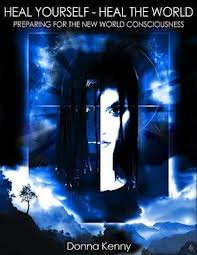
End Time Prophecies - An Evolutionary Cleansing and Rebirth
'And I saw a new heaven and a new earth: for the first heaven and the first earth are passed away; and the sea is no more. And I saw the holy city, new Jerusalem, coming down out of heaven of God, made ready as a bride adorned for her husband. And I heard a great voice out of the throne saying, Behold, the tabernacle of God is with men, and he shall dwell with them, and they shall be his peoples, and God himself shall be with them, and be their God: and he shall wipe away every tear from their eyes; and death shall be no more; neither shall there be mourning, nor crying, nor pain, any more: the first things are passed away.'
Book of Revelation 21:1-4 — American Standard Version of the Bible
This chapter focuses on several end time prophecies that foretell a cleansing process and the coming of a new world.
Hopi Indian Prophecy
The Hopi are Native Americans that live on reservation land in northeastern Arizona. The word Hopi means 'peaceful ones.' Hopi tradition is rich with prophetic teachings that were given to the Hopi from the Creator through Maasaw, the spirit caretaker of the earth, almost 1,000 years ago.
According to the Hopi, we are living in the Fourth World as there have been three Worlds before this one. The Hopi believe that the Fourth World is in times of critical crisis. Our Earth is being gravely mistreated. Her natural resources are being ripped out of her and will soon be depleted. Pollution of the air, water and soil is killing the earth and her inhabitants. Man's greed and materialistic concerns, selfishness, mistreatment of his fellow man and inability to live in peace and harmony are leading to destruction. The world is in a state of koyaanisqatsi. Koyaanisqatsi is a Hopi Indian term which means 'world out of balance,' requiring a different way of living. The ancient prophecies predicted that the imbalanced circumstances of these times would come. These prophecies point to the end of the Fourth World foretelling an end time event called The Great Purification. The Great Purification will cause a great shaking and rocking of the world and afterwards, the new Fifth Age will emerge...
Mayan Prophecy
The Mayan civilization originated in Mesoamerica around 1800 BC. Traditionally the development of the Mayan civilization is divided into three distinct periods: Pre-Classic from 1800 BC to 250 AD, Classic from 250 AD to 900 AD and Post-classic from 900 AD to 1500 AD. The Classic period is considered to be when the Maya reached the pinnacle of their considerable development. The ancient Maya are renowned for their unique and beautiful art and architecture. They were also very advanced and sophisticated agriculturalists, mathematicians, astronomers and timekeepers.
The Maya were avid sky watchers and kept very precise and sophisticated calendars based on major and minor cosmic cycles. The Mayan Long Count calendar ends on December 21, 2012 and there are various theories regarding what will happen to humanity and the planet on that date. Some of these theories espouse an explosive end of the world and some espouse worldwide transformation and rebirth. The Mayan elders tell us that December 21, 2012 is a time of transformation—not doomsday. Carlos Barrios is a Mayan ceremonial priest and spiritual guide as well as an anthropologist and a historian. He is also the author of Kam Wuj: El Libro del Destino, a book that explores Mayan teachings. Mr. Barrios is credited with saying 'Other people write about prophecy in the name of the Maya. They say that the world will end in December 21, 2012. The Mayan elders are angry with this. The world will not end. It will be transformed.' ...
Book of Revelation
The Book of Revelation is the last book of the biblical New Testament. it's also referred to as The Revelation to John, The Apocalypse of John or simply The Apocalypse and is generally believed to have been written by John, an exile on Patmos Island, around 95 AD. However, there are scholars that are not in agreement with this date and assert that it was more likely written around 68 AD. The Book of Revelation is a visionary piece that conveys its story through mysterious symbolism which has left it open to numerous and varied interpretations over time. In its most general terms, it illustrates an apocalyptic showdown between benevolent forces and persecuting forces. Ultimately, the benevolent forces prevail over the persecuting forces, paving the way for God's heavenly kingdom, 'The New Jerusalem,' to be brought down to Earth...
All three prophecies point to a future fulfilment of the death and transformational rebirth of our world. The Mayan and Hopi prophecies indicate that the breakdown and subsequent rebirth of our world will occur in the near future. According to Mayan belief, the storm period will culminate in 2012 when the world will be reborn. The Hopi Elders tell us that the Fourth World is in critical crisis and will end soon as many of the prophesied signs have been fulfilled and The Great Purification will make way for the new Fifth World. The Book of Revelation, from the futurist point of view, indicates a coming Tribulation which will be followed by the birth of the New Jerusalem. All three prophecies also anticipate the return of a very wise and special being. The Maya expect Kukulcan, the Hopi await Pahana, the True White Brother, and the Book of revelation foretells the return of Christ.”
Heal Yourself - Heal the World: Preparing for the New World Consciousness
Donna Kenny, Scott Brandle eBookIt.com (November 27, 2011)
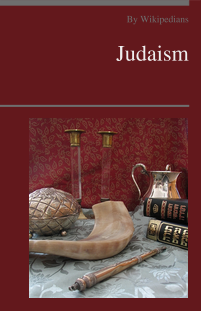
"Islam and Judaism share the idea of a revealed Scripture. Even though they differ over the precise text and its interpretations, the Hebrew Torah and the Muslim Quran share a lot of narrative as well as injunctions. From this, they share many other fundamental religious concepts such as the belief in a day of Divine Judgment. Reflecting the vintage of the religions, the Torah is traditionally in the form of a scroll and the Qur'an in the form of a codex...
There is a small bone in the body at the base of the spinal cord called the Luz bone (known by differing traditions as either the coccyx or the seventh cervical vertebra) from which the body will be rebuilt at the time of resurrection, according to Muslims and Jews who share the belief that this bone does not decay. Muslim books refer to this bone as 'ajbu adh-dhanab'.”
Judaism, p. 711-12
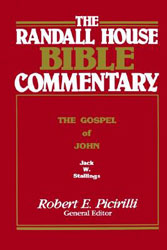
"Jesus solemnly assures the disciples that they will, in the future, perform even greater miracles than He. By this He means to say that through the power of the Holy Spirit, they will bring about the greatest miracle of all — the salvation of lost souls. He promises them that whatever they ask for, in connection with their ministry of bringing the miracle of salvation to lost men, will be granted them.
The theme of this section is reassurance and encouragement. Jesus gives the disciples three basic reasons they should cease being troubled in their spirits. First, He tells them that, although He is going away, He will return for them so that they may ultimately join Him where He is going (vv. 1-3). Second, He tells them that, though He is going away, He will be the only means by which men may come to God and go to Heaven (vv. 4-11). Third, He tells them that, though He is going away, their ministries are not finished. In fact, the best is still ahead. They are going, by the Holy Spirit's power, to be part of the greatest miracle of all, bringing men to salvation (vv. 12-14).”
J. W. Stallings, Bible Commentary: The Gospel of John,
Randall House Publications, 1989, page 205
"According to the Zohar - an early Kabbalistic text - the resurrection will take place forty years after the arrival of Mashiach. However, certain righteous individuals will arise with the coming of Mashiach...
There is a small bone in the body called the Luz bone (some identify this bone as the coccyx) from which the body will be rebuilt at the time of resurrection. Our daily prayers are replete with requests for the resurrection and there are many customs connected with it.”
Nissan Dovid Dubov, What is the Jewish Belief About Moshiach?
Rabbi N. D. Dubov is director of Chabad Lubavitch in Wimbledon, UK.
Web December 13, 2012
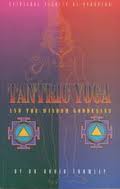
"Kundalini, often translated as the 'serpent power,' is a term which has gained some recognition today, particularly in yogic and New Age circles, though it is seldom properly understood. Kundalini literally means a coiled-up energy or the power that dwells in a cave (kunda). For any transformation to be possible, an energy is needed to bring it about. For the transformation of consciousness a special and powerful energy is needed. This is Kundalini.
Tantra presents a whole yogic and mantric science for developing Kundalini. However, this Tantric science has its foundation or parallels in Vedic, Vedantic and Yoga texts that speak of the transforming word (vak), the energy of consciousness (chit-shakti), or the power of knowledge (jnan-shakti), which are all synonyms for Kundalini.
The traditional role of Kundalini is different than the way in which it is generally viewed today, which is to regard it as a mere force to control and harness. Kundalini is a form of the Goddess and should be worshipped as Her power. It is not some psychic energy to be aroused but a Divine energy to be revered. Efforts to manipulate Kundalini through wilful practice or forceful techniques are not only dangerous, but fail to recognize the reality of the Goddess and are contrary to her worship.”
Tantric Yoga and the Wisdom Goddesses
David Frawley, Lotus Press (March 1, 1994) p. 30

"The new birth to which Jesus invites Nicodemus does not supplant the physical birth to which Nicodemus points, but adds to it: not born of water or Spirit, but water and Spirit. Jesus invites Nicodemus to enter the kingdom of God, in which the Spirit will play the same role as his flesh and blood mother: providing the womb of new birth. Nicodemus does not need to enter his mother's womb again, but is called to enter the womb of the Spirit and to receive new life as a 'child of God' (cf. Jn. 1:13). It is to this birth from the womb of the Spirit that Jesus points in v. 6, 'What is born of the flesh is flesh, and what is born of the Spirit is spirit.'
Contemporary certainty about the meaning of 'born again' may impede full engagement with Jesus' invitation here. How often, for example, do church teachings about being born again focus on the birthing imagery of this expression? Vocabulary of birth and womb belong to the female partner in the birthing process in the ancient world, while begetting and generation belong to the male partner. The imagery here is unambiguously feminine.. as Sandra Schneiders has put it so well, 'Jesus was not speaking here of being 'engendered' by God, as of a male principle, but of being 'born' of God, as from a female element.' The Spirit is portrayed as the womb of new life, yet this element of the expression is hardly visible in 'born again' conversations.”
The Word Disclosed: Preaching the Gospel of John
Gail R. O'Day Chalice Press (2002) p. 22
The
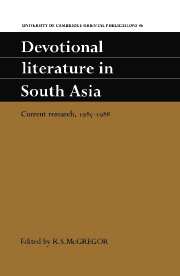
Sadguru and the Holy Spirit
"Sant Ramdaa (1608-81), a Maharashtrian mystic akin to the Varkari movement of Pandharpur, not only influenced Sivaji, the founder of the Maratha kingdom, but gave spiritual and moral vigour to the thousands of Marathas who helped Sivaji to establish Hindu self-rule (svarajya). Ramdas has considerable influence even today on the social and political life in Maharashtra. In this paper I shall examine the concept of the Sadguru (divine guru) in his compositions, and I would like to point out how this concept is close to that of the Holy Spirit that dwells in the heart of men. Therefore I will make some references to the spiritual growth of Ramdas, as well as to some Christian mystics.
Ramdas' teaching about the Gurus.
In the Das-bodh (in the fourth samas of the first dasak), Ramdas praises the Sadguru. According to Ramdas, the Sadguru pervades the universe;... The Sadguru is greater than the touchstone (paris), the wishing tree, or the wishing cow. Ramdas bestows such great praises on the Guru because the latter imparts real knowledge to the disciples and teaches him the way of right behaviour...
Therefore the one who desires salvation must have a Sadguru; without a Sadguru none has achieved salvation; this will not happen until the end of ages. (5. 1. 44)...
Functions of a sadguru
Ramdas narrates various functions of a sadguru (earthly guru). The sadguru unites the devotee with God; he frees him from the troubles and pains of samsara (life and the world); by giving knowledge he liberates the disciple from the bondage of wishes and offers him the knowledge of things and their nature; further he explains his teaching, and advises abstinence. Thus he destroys avidya, ignorance, in the disciple. At the end of his explanation about the guru, Ramdas reduces all these functions to one: the real guru proposes the knowledge of the self and of God. The one who has achieved atmajnana also achieves brahmajnana (i.e. 'knowledge of the Highest'). Through the achievement of atmajnana one realises God and achieves unity with him: 'Listen to the characteristics of jnana: jnana means atmajnana, to see oneself by self, yes, this is real knowledge. To realize the God of gods, to acknowledge the true nature, to ask about the eternal and passing: this is knowledge' (5. 6. 1-2).
Atmajnana
The realisation of atmajnana by a person is simultaneously the realisation of brahman. It is an experience of the assertion aham brahmasmi. The devotee comes to the realisation that he is no different from the infinite brahman. However, this realisation comes at a moment when the devotee (jivatma) is still existing by itself. This is the ultimate existential experience of finiteness and infinitude, of the reality of both self and the infinite brahman...
The soul can achieve such knowledge because the Sadguru dwells in its heart, but not by study of the scriptures nor of any other book. This is possible only by recognising the self (5. 6. 19). Suddhajnana means realisation of the self by the self: it is a process of going into the self.”
R. S. McGregor, Devotional Literature in South Asia: Current Research, 1985-1988, Cambridge University Press, 1992, pp. 153-54
NOTE: If this page was accessed during a web search you may wish to browse this site where the above topic or related issues are discussed in detail to promote peace, religious harmony, and spiritual development of humanity based on the advent and message of the promised Spirit-Paraclete who—already manifested in various forms over the ages as His Spirit (Shakti)—now brings eschatological closure and commences the Resurrection:
The Paraclete Shri Mataji Bearing Good News Of Jesus' Kingdom Of God, Resurrection And Last Judgment In Age That Has ComeThe Resurrection was expressly taught by Christ (John 5:28-29; 6:39-40; 11:25; Luke 14:14) and is the central eschatological doctrine of Judaism, Christianity and Islam
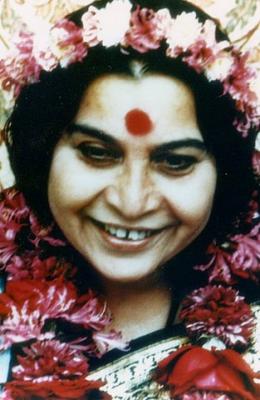
Shri Mataji Nirmala Devi was
Christian by birth, Hindu by
marriage, and Paraclete by duty.
She spent four decades of 3000
worldwide speaking events
delivering the Good News.
"The Paraclete represents direct,
intimate divine intervention,
supporting and teaching
believers and challenging the
world, as Jesus did.” "The
Paraclete cannot be received by
the world (14:17), as Jesus
himself was rejected (5:43; 12:48;
15:18-20). The world which does
not know the Paraclete (14:17)
did not know Jesus (16:13).”
(Stevick 2011, 290-92)
"The teaching of the Paraclete, as
the continuation of Jesus'
teaching, must also be understood
as the fulfillment of the promise
of eschatological divine
instruction.” (Witmer 2008, 208)
The Paraclete Shri Mataji
"Tell all the nations and tell all the people all over the Great Message that the Time of Resurrection is here now, at this time, and that you are capable of doing it.”
The Paraclete Shri Mataji
Cowley Manor Seminar, UK—31 July 1982
"This is the transformation that has worked, of which Christ has talked, Mohammed Sahib has talked, everybody has talked about this particular time when people will get transformed.”
The Paraclete Shri Mataji
Chistmas Puja, India—25 Dec. 1997
"The Resurrection of Christ has to now be collective resurrection. This is what is Mahayoga—has to be the collective resurrection.”
The Paraclete Shri Mataji
Easter Puja, London, UK—11 April 1982
"Announce it to all the seekers of truth, to all the nations of the world, so that nobody misses the blessings of the Divine to achieve their meaning, their absolute, their spirit.” The Paraclete Shri Mataji
"The main thing that one has to understand is that the time has come for you to get all that is promised in the scriptures, not only in the Bible but all the scriptures of the world.” The Paraclete Shri Mataji
Related Articles:
The resurrection of Jesus is not the central datum of Christianity.
He whose fearless supreme sacrifice now fulfills eschatological promise
Deepak Chopra: "Jesus belongs to the world. The promise ...”
Crucifixion demonstrates"What dies is mortal body, not living spirit"
Deepak Chopra has done far more to uphold and promote Jesus
Entrance into Kingdom of God which Jesus speaks
The granting of the spirit of holiness is viewed as yet to take place ...
Our desire is that the Holy Spirit, who is the Divine Revealer ...
The Second Birth of Man—In Spirit
Eschatological aspect of the kingdom possesses for Jesus ...
"As in earlier Gnostic religion, resurrection ... is distinctly not ...”
The Resurrection of Christ within You
Jesus rebukes those who seek access to God elsewhere
Jesus proclaimed"salvation through knowledge ... of the divine light"
Jesus presented"salvation .. based upon knowledge of self"
Disclaimer: Our material may be copied, printed and distributed by referring to this site. This site also contains copyrighted material the use of which has not always been specifically authorized by the copyright owner. We are making such material available to our readers under the education and research provisions of "fair use" in an effort to advance freedom of inquiry for a better understanding of religious, spiritual and inter-faith issues. The material on this site is distributed without profit. If you wish to use copyrighted material for purposes other than "fair use" you must request permission from the copyright owner.